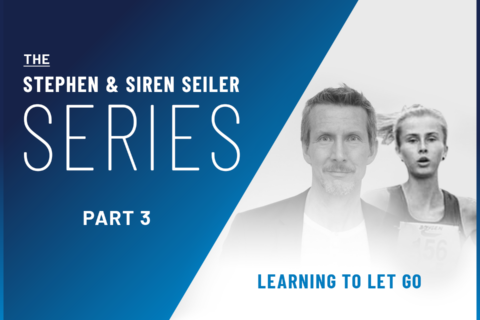
The Stephen & Siren Seiler Series: Resuming Running and Building Good Habits
Siren Seiler talks about getting back into running and the importance of building good habits around training and recovery.

Siren Seiler talks about getting back into running and the importance of building good habits around training and recovery.

Siren Seiler talks about how building a life outside of running helps her navigate some tough times in her athletic career.

Siren Seiler discusses the growth that came with detaching running from her identity.

In the third part of our eight-part video series, Siren Seiler talks about learning to let go of expectations and start over after being sidelined with another injury.

In part two of our new video series, Dr. Stephen Seiler talks with his daughter about her recovery from overtraining and injury.

We know him as a sports scientist, but he’s also a father and coach. In this eight-part video series, we see Dr. Stephen Seiler in all three roles as he talks candidly with his daughter Siren about her return to training after struggling with an eating disorder and RED-s.

Espen Aareskjold, coach of Uno-X Pro Cycling, talks with Dr. Seiler about how he develops some of the best cyclists in the world.

In this second part of our three-part series, Dr. Stephen Seiler gives us the history of exercise physiology research as well as insights into the inner workings of the academic world.

Load, stress, strain—they’re terms we hear a lot in sports science, but what do they mean? Dr. Stephen Seiler explores how your internal response to external load will change as you become fitter and more durable.

In collaboration with Dr. Stephen Seiler, the “father of polarized training,” we have curated everything you need to know about the 80/20 training method.

Dr. Stephen Seiler explains why polarized training is a winning strategy for the long game of endurance sports. By balancing the stress of training, athletes see bigger gains over time.

Intensity can be a slippery slope for endurance athletes—there is a temptation to push harder and longer. The real recipe for performance might entail some new priorities.

It can be very easy to train at a moderate intensity all the time, which can be a surefire way to land in an overreached state. Polarized training can help prevent that—and in this video, Dr. Seiler explains how.

Scientists have worked closely with athletes and coaches to define the polarized model and explain how it works. Who leads the way? Dr. Seiler talks about the scientific process playing out in valuable ways in both research and the real world.

Is 80/20 really the best mix of intensities? And what’s the best way to categorize training? Dr. Seiler has a simple method to get you started.

This is our first episode of a limited series recorded with Dr. Stephen Seiler. In this episode, Seiler explains his background as a researcher, and talks about something near and dear to all of us: the heart.

Dr. Stephen Seiler shares his current research involving new tools, breathing techniques, heart rate variability, and… beer!

Learn advanced data analysis for cycling, triathlon, and running workouts and races. With new data analysis tools, you can make better decisions about your training.